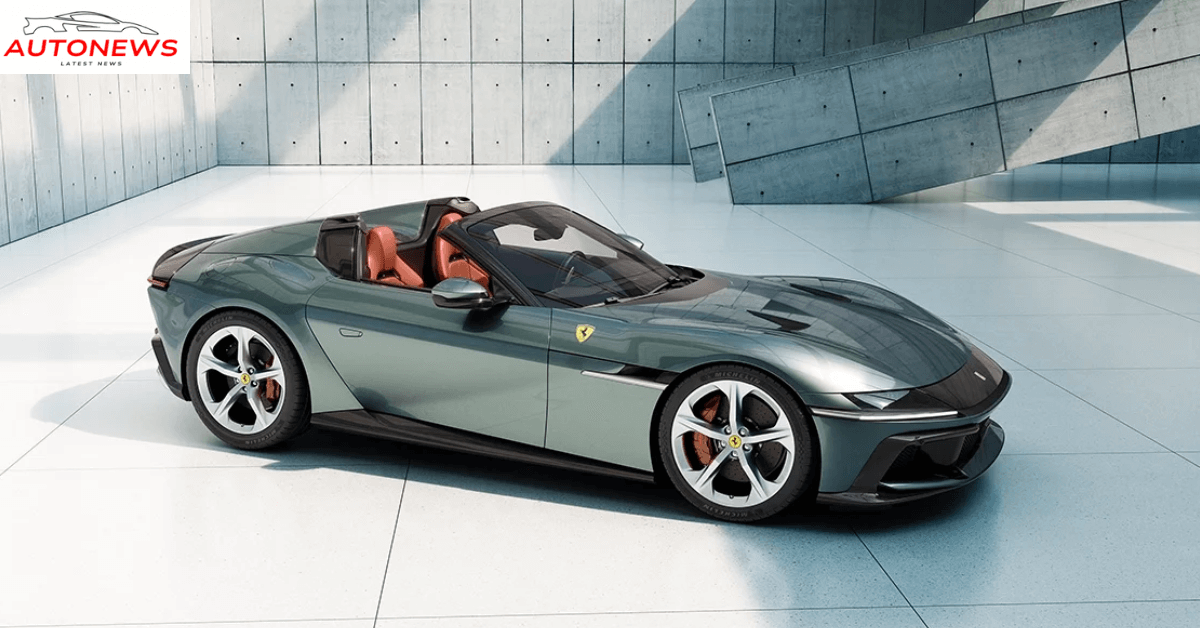In an era dominated by electrification and downsizing, Ferrari’s latest marvel, the 12Cilindri and its open-top sibling, the 12Cilindri Spider, are defiant declarations of what makes a true Prancing Horse. These cars are not just successors to the 812 Superfast and GTS — they are celebrations of heritage, engineering artistry, and pure V12 passion.
A Tribute to Tradition, Built for the Future
The name “12Cilindri” (Italian for “12 cylinders”) says it all. At the heart of both models is a naturally aspirated 6.5-liter V12 engine, roaring to life with no turbochargers, no hybrid assistance, and no apologies. It’s a bold move in 2025, as regulations squeeze engines ever tighter. But Ferrari has managed to preserve its crown jewel: a high-revving, soul-stirring, 65-degree V12 that screams all the way to 9,500 rpm.
The engine delivers 830 horsepower and 678 Nm (500 lb-ft) of torque, sent exclusively to the rear wheels via a lightning-quick 8-speed dual-clutch transmission. 0-100 km/h (0-62 mph) arrives in 2.9 seconds, while top speed soars beyond 340 km/h (211 mph). Numbers that rival supercars of any category — but the 12Cilindri isn’t just about speed. It’s about sensation.
Sculpted in Wind and Emotion
Designed under the guidance of Ferrari’s chief design officer Flavio Manzoni, the 12Cilindri breaks from recent Ferrari design language. The result is a silhouette that pays homage to the legendary 365 GTB/4 Daytona from the 1970s, with a long hood, sharply creased body lines, and a low, commanding stance.
The coupé is elegant yet aggressive. A full-width glass-like front element merges the headlights into a continuous strip, giving it a futuristic, menacing stare. Aerodynamic features like active flaps and carefully sculpted intakes ensure that beauty and function work hand-in-hand.
The 12Cilindri Spider retains the same visual identity but offers open-top freedom, made possible by an electric folding hardtop that opens in just 14 seconds at speeds up to 45 km/h (28 mph). Roof down, the V12 becomes not just a performer, but a concert hall.
A Cabin That Marries Analog Feel with Digital Brilliance
Inside, Ferrari has continued its pursuit of a driver-focused experience. The cockpit borrows cues from the SF90 and 296 GTB, offering a dual-cockpit design that separates driver and passenger with a floating central console. The 12Cilindri features a digital instrument cluster, passenger display, and central touchscreen — a tech-heavy environment that doesn’t overwhelm.
Materials are exquisite, with leather, carbon fiber, and Alcantara crafted to perfection. Ferrari has also enhanced comfort and usability, making this V12 grand tourer surprisingly livable, even for longer journeys. The driving position is lower, the visibility improved, and the sound system (for those rare moments when you’re not listening to the V12) is among Ferrari’s best yet.
Dynamics That Defy Physics
Despite its front-engine layout, the 12Cilindri handles like a mid-engine machine. Credit Ferrari’s relentless development of its Side Slip Control, rear-wheel steering, and active aerodynamics. The weight distribution is 48.4% front / 51.6% rear — nearly ideal — while a new chassis offers 15% more torsional stiffness than the 812.
The 12Cilindri feels lighter than its 1,560 kg dry weight would suggest. Turn-in is razor sharp, body roll is virtually nonexistent, and the rear end remains composed even under full power. The Spider adds only 60 kg more, thanks to clever engineering that retains rigidity without compromising performance.
The Last Pure V12 Ferrari?
Perhaps the most poignant thing about the 12Cilindri is what it might represent: the last purely internal combustion V12 Ferrari. While Ferrari is committed to offering internal combustion alongside hybrids and electric models in the coming years, emissions regulations mean this could be the swan song of a legendary engine lineage.
If this is indeed the last of its kind, Ferrari has made it count. The 12Cilindri and Spider are not just cars — they are emotional experiences, mechanical art pieces, and affirmations of what makes Ferrari different. In a time of synthetic soundtracks and silent EVs, the howl of a naturally aspirated V12 at nearly 10,000 rpm is more than nostalgia — it’s a statement.
Conclusion: Icons in the Making
With the 12Cilindri and 12Cilindri Spider, Ferrari has not just launched new models — it has rekindled the flame of what makes driving exciting. These are not just performance cars; they are experiences crafted with reverence to the past and engineered for the future.
Pricing is expectedly high — well into the seven figures for those lucky enough to be offered one — but for the faithful few, these cars are not just vehicles. They are living legends, and perhaps the last chapter of Ferrari’s most iconic engine.

